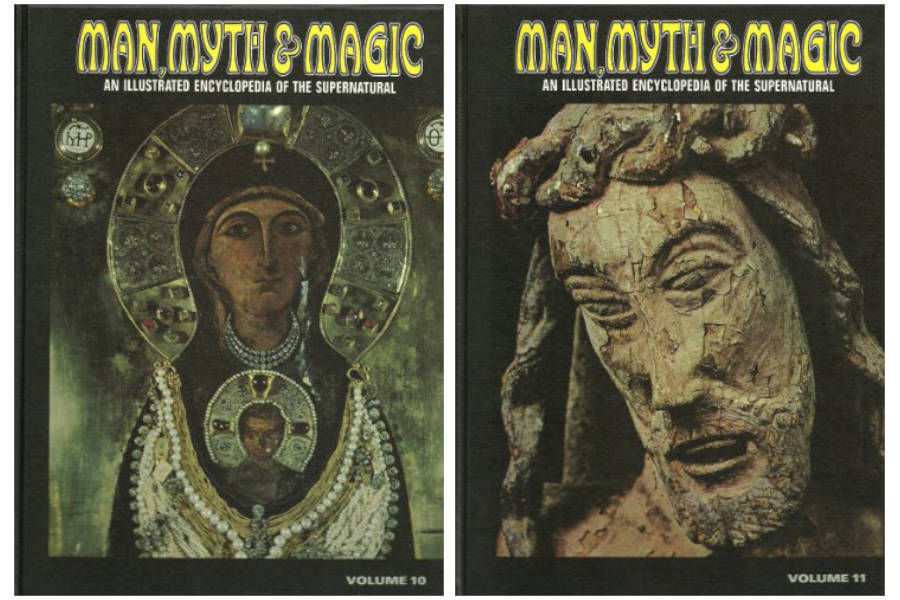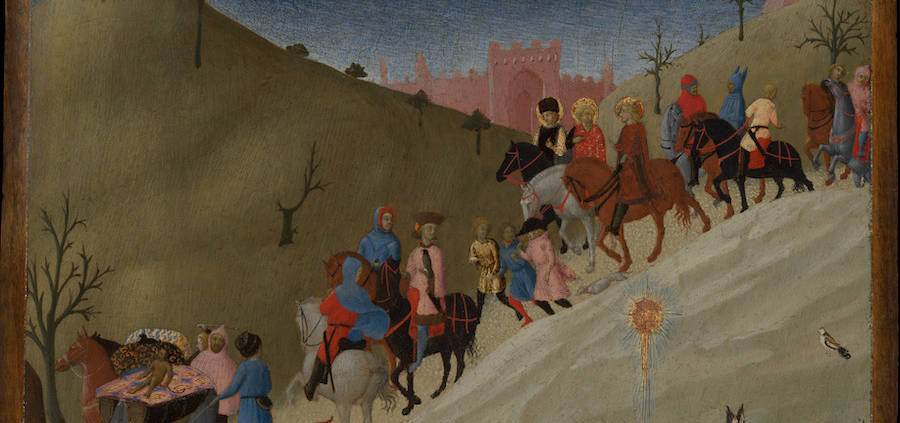Shepherds, Kings, Myths, and Metaphors by Gene Ciarlo
There is a popular television series on the life of Jesus that is available on Netflix. It is called The Chosen. Its creator, producer, writer, and director is Dallas Jenkins, an evangelical Christian. Many churches and religious organizations have formed discussion groups around this series, which is of consistently high quality: the acting and cinematography are outstanding, with overall top-notch work in production and direction. The series is inspiring, moving, and can easily bring one to tears during certain dramatic moments in the life of Jesus and his “students,” as the apostles are often called. However, it feels to me to be mostly myth, symbol, or metaphor in its portrayal of the life of Jesus as related in the gospels.
Christian Evangelicals seem to have the correct fundamental idea when it comes to learning about Jesus and his way of life. Simply by reading the Bible, especially the New Testament, you can discover everything you need to know and believe in order to become a knowledgeable and faithful Christian. You must read it and meditate on it until you have memorized some of its more important parts. This simple formula seems right, just, and sufficient according to a certain fundamentalist Christian confession of faith. What more is required other than a lot of tedious, academic, and questionable theologizing?
Praiseworthy as it may seem, confessing Jesus as Lord by trusting in the literal, straightforward, inerrant, infallible, and inspired words of Scripture is not enough because that approach is not quite so simplistic, nor is it totally flawless and inerrant.
If you have ever attempted to read the Old Testament, or what may be called the Hebrew or Jewish Bible, you will have discovered page after page of events and stories that you cannot understand because they seem so farfetched and/or unintelligible. Because we do not live in that day and age, in that particular cultural environment, we can appreciate neither the broad strokes nor the nuances of life as they are recorded without an historical study of the language, laws, and customs of the time.
Not only is it difficult to understand the Jewish Bible—even the New Testament, as we Christians call it, is a challenge for a multitude of reasons. The gospel stories of Jesus seem straightforward and intelligible. Granted, there are variations in the events narrated by the writers of the synoptic gospels, Matthew, Mark, and Luke. Within each of these gospels, there is need to study and research in order to understand what the author is trying to tell us.
Allow me to shed light on what I mean when I say that it is difficult to understand Sacred Scripture—and, for us, the New Testament in particular. As we are emerging from the Christmas-Epiphany season, I will focus on the three gospel stories of the birth of Jesus to demonstrate what I mean by the need for study and research in order to comprehend what might seem, at first, to be obvious and apparent.
In the gospel of Matthew, the birth of Jesus takes place in Bethlehem, in no named location. It is a while before the kings, often called Wise Men from the East or astrologers, follow a star to visit him at the home where Mary and Joseph live. The story is simple and straightforward.
In Luke’s gospel, however, the scene opens with Mary’s visit to her cousin Elizabeth and all that it entails, including wonderful hymns and inspiring messages. Shortly afterwards, Mary and Joseph are compelled by decree to leave their hometown of Nazareth and travel to Bethlehem. At the birth of Jesus, a choir of angels sings joyously about the event to shepherds who are tending their flocks. They excitedly end up at a humble animal shelter with a fodder manger bearing the delicate newborn child named Jesus. There are no kings, no gold, no incense, no myrrh.
The third synoptic gospel writer, Mark, who was really the first to write a gospel according to the accepted canon of Scripture, does not even mention the birth of Christ in his rendition of the Good News but starts his gospel with John the Baptist, the voice crying in the wilderness to prepare the way of the Lord. Why would he leave out something as vital as the birth of the Savior of the world?
We know these stories and we put them together to make one fantastic tale of Jesus lying in a clean, straw-filled manger in Bethlehem with Mary and Joseph standing by while angels sing, shepherds bow in awe and wonder, and kings bear precious gifts. It is a glorious and heartwarming scene. But what does it all mean? Why are there two different stories and one omission regarding the birth of Jesus written by three of the four Evangelists?
A simple sentence in a book I was reading recently about worship in the early church begins to give an answer to my question: “One can only say what the Scriptures mean when one has first come to understand what they meant.” The present becomes intelligible when we understand the past.
We are inclined to take English translations of biblical texts—not even the originals—that were written nearly 2,000 years ago and accept them just as they are, with no consideration to differences in language, interpretation, culture, popular local lifestyles and traditions, as well as other innumerable nuances. Then we conclude that the words we are reading are the infallible and unquestionable truth as we might understand them today with our own traditions, language and time differences, and a multitude of other factors that can change the meaning and sense of a simple sentence or even a word. Back to my initial observation: We don’t know what those words, ideas, expressions, and stories are really trying to tell us, and what they truly mean, until and unless we know what they meant to the authors at the time in which they were composed.

Why does Matthew reference kings in his rendition of the birth? Why does Mark ignore them completely, not even mentioning such a momentous occasion as the birth of Jesus? And what is this about shepherds in Luke’s gospel? It is not just by chance, by simply conjuring up what they could recall, that these men wrote as they did. There was method to their approach.
Perhaps the intention of Luke was to show that Jesus came, first of all, for the poor and simple people of the earth. This would explain why the shepherds were prominent in his version of the birth. Perhaps Matthew thought that Jesus was worthy of the adoration of royalty. As for Mark: maybe in view of Jesus’s future work, his birth was so simple and commonplace that the Evangelist didn’t think it was worth any comment at all.
But there is more that must be taken into consideration in reading and meditating on the Christian writings. There are two words and concepts that are key: myth and metaphor. The gospels are saturated with myth and metaphor, and I dare say that many, perhaps most of the stories told in the New Testament fall within the category of either myth, metaphor, or both.
The nativity stories, for instance, are mainly myth. I am not saying that they bear no resemblance to truth and are just fables. I am saying that they are contrived stories told to make a point, to guide the reader to a richer and deeper understanding and belief. Perhaps Jesus was not born in a manger amongst the animals in a stinking barn. Perhaps it is a myth, a story told by the author of the gospel, in this case by Luke: he is trying to say that here is Jesus, the holy, godly, sinless savior of the world and teacher of the way we ought to live in order to be lifted up to our grace-filled potential—here he is, this God-man, lowered to the condition of the poorest and humblest category of people at the time. At his birth he is homeless in an animal trough.
What is the message of this myth? For God to take the form of a human being in this lowly state of entry among humankind is to call upon drama, serious drama, to convey to generations to come something about compassion, love, and self-giving. It says, “I want to be one with you, among you, to teach you how to live as one with God and all creation.” This is perhaps one of the core messages of the manger. This is the myth of the manger.
Here and within the actual texts of the other gospels, an attempt has been made by the four Evangelists to capture the essence of what Jesus said and did in his short life on earth. Some of the stories told by the gospel writers may actually have happened. Many of them did not happen, but were told in all honesty and sincerity to convey a message, to bring out a point.
For another example, see Matthew 13:33: “The kingdom of heaven is like yeast which a woman took and mixed with half a hundredweight of flour till it was all leavened.” This is called a parable. In this case it is a metaphor for the way the Word of God can increase and multiply among people who are open to accept and believe. Maybe Jesus himself is the yeast, buried in the multitude of humanity, gradually introducing us to the reign or the kingdom or the domain of God. The kingdom of heaven, says Jesus, is like the yeast which grows and spreads throughout all of creation. Perhaps that yeast is the life and message of Jesus that came to be know as The Way, the Church, the ekklesia—or us. I choose this story of the flour and yeast intentionally, as this theme, this metaphor for the kingdom, is vital to our current season of manifestation, of Epiphany.
There are other gospels in addition to the four that have been sanctioned by the church, the canonical gospels. Among them is the gospel of Thomas, which was written around the same era as Matthew, Mark, Luke, and John. It has something to say about the kingdom of God that I see as enlarging the concept of God’s grace in the world. Here is paragraph 113: “His disciples said to him, ‘When will the kingdom come?’ Jesus said, ‘It will not come by waiting for it. It will not be a matter of saying ‘Here it is’ or ‘There it is’. Rather, the kingdom of the father is spread out upon the earth, and people do not see it.”
The beginnings of that renewed kingdom happened with the birth of Jesus: shepherds, kings, and even animals. Taken together, we and they are the kingdom of God, the reign of God on planet earth. ♦
Gene Ciarlo is a priest no longer active in the ministry. Ordained from the American College, University of Louvain, Belgium, he spent most of his ministry in parish life. After receiving a master’s degree in liturgical studies from Notre Dame University he returned to his alma mater in Louvain as director of liturgy and homiletics. Gene lives in Vermont, where everything is gracefully green when it is not solemnly white.





Leave a Reply
Want to join the discussion?Feel free to contribute!